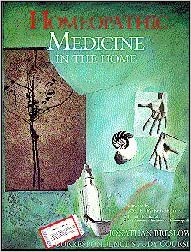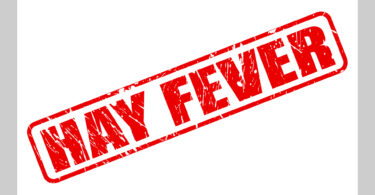I was going through my copy of Breslow’s Homeopathic Medicine In The Home the other day
because I had just told someone that, as a beginner, she’d be better off reading Breslow than The Organon; and as I was going through Breslow’s book, I found myself saying over and over again, “Oh, that is so interesting! I wonder if anyone knows that?” Inevitably, I came to the conclusion that I should make this my next Tidbits article. And so it came to pass!
See how much of this you know! (Answers at the bottom.) If you like this exercise, we can do it more often.
***
- When a person gives you a local symptom, like, “My stomach hurts”, there’s not much we can do with a symptom like that, is there? And you know why? Because there are 200 remedies in that rubric! So what are the clarifying questions that we need to ask when hearing such a broad statement?
- What is typical of Pulsatilla discharges?
- What are our two main “sudden onset” remedies?
- If a patient has thirst for large quantities of water during a fever, what 3 remedies should we be thinking of right off the bat?
- If a patient has hot/dry skin during a fever, what 2 remedies should we be thinking of right away?
- What remedy is this? Patient has a right-sided sore throat that came on suddenly. There’s a high fever; glands are swollen, pupils are dilated, face is kind of red, throat is red and dry with burning, throbbing pains, swallowing is painful. Patient is not thirsty.
- What remedy is this? Patient has sore throat with bad breath. Excessive salivation. Worse at night. Worse for heat but also worse for cold. Indented tongue (takes the impression of the teeth).
- If your patient says, “I’ve got a sore throat,” often they will say nothing more. But in truth, we can do nothing with this symptom, there are over 200 remedies in that rubric! What more do we need to know when taking a sore throat case?
- At the very first sign of a sore throat, what remedy should we give?
- Lac caninum is famous for sore throats that alternate sides; but, what if you give Lac caninum and it doesn’t work, what’s your back-up remedy?
- What remedy is this? A flu. Came on by being out in cold, wet weather. Aching and stiffness are the sensations. Mucus is thick yellow or green. Hoarse. Red scratchy throat, sneezing and coughing. Better warmth. Better movement; restless at night. Thirsty.
- How do you “plus” your remedy bottle? (In other words, how do you raise the potency?)
- What remedy do we call “the opposite of Rhus tox” and why?
- True or False: It’s fine to give a remedy that matches the symptom even if it doesn’t match its modality.
- Aconite and Belladonna are known for “sudden onset”. What if you’ve got a sudden onset case and you have to decide between Aconite and Belladonna? Both have “skin: dry and hot with red face”. What keynotes are you going to be looking for to differentiate between Aconite and Belladonna?
- What are the 5 “D’s” we’ve been taught to associate with Gelsemium?
- What do we know about Kali bich’s expectoration/discharge?
- What remedy is famous for ear aches/pain/loss of hearing caused by flying in an airplane?
- What remedy is this? A 9-year-old girl has a cold: Stuffed nose with thick yellow mucus, worse at night, better during the day outside (meaning nose runs during the day outside but stuffed up at night in the house). Loose cough, yellow mucus, better outdoors. Lips are dry with no thirst. Child’s demeanor is weepy.
- Earache case where the patient has stitching pains, very much worse touch, and worse draft of cold air but doesn’t have irritability. Can we give Hepar sulph which seems to match but is known for irritability?
- Earache case where the patient has throbbing pains in the right ear, flushes of heat to the face, thirstless; sad and weepy but better for consolation. Can we give Belladonna? It covers most of the case.
- We have two main remedies for “Consolation amel.” (That means you can console the patient by saying, “There, there, you’re gonna be fine in no time, you’ll see!” and they will actually believe you and feel better for it.) Which two remedies are those?
- Which remedy desperately wants to be consoled but no amount of consolation is ever enough?
- Which remedy has an upset stomach that begins some time after eating, like maybe even several hours later?
- If you’ve eaten something fatty, and now you don’t feel well; like, let’s say you ate an entire pizza by yourself! What’s the remedy?
Answers
- Patient reports an overly generalized symptom like, “My Stomach Hurts!” What do we need to find out? “Sensation, Location, Modalities, Concomitants”. Also, “Etiology” (what caused the complaint, what happened?) These are our standard questions for everything, no matter what the person says! “My stomach hurts”, “I have a headache”, “My back hurts”, etc. “Sensation” means describe the discomfort. “Location” means, where is it, exactly? “Modalities” are the things that make the complaint better or worse. “Concomitant” means, what comes along with the complaint; or, what else? Patients aren’t used to having to think about these things because no doctor has ever really cared, so, this will be a challenge to them, you’ll probably have to give examples. (“Is it a sharp pain? Or a dull pain? Does it cut like a knife?”)
- What is typical about Pulsatilla mucus/discharges? They are easily expectorated; yellow or yellow-green, bland (non-irritating) and thick and creamy.
- Our sudden onset remedies are—Aconite and Belladonna
- What remedies have tremendous thirst with fever: Aconite, Bryonia, Phosphorus
- Hot dry skin during fever? Aconite, Belladonna
- Right sided sore throat that came on suddenly: Belladonna
- Sore throat with bad breath, worse heat and cold, worse at night—Mercury
- How to take a sore throat case: Which side is it on? Did it start on one side and move to the other? Did it then move back to where it started? What’s the sensation of the sore throat, describe the pain. What makes the pain better or worse? Is the patient thirsty? What kind of drinks help his throat? What does the throat look like? What happens when you try to swallow? What makes swallowing better/easier or worse? What are the concomitants? Examples: bad breath, swollen glands, drooling in sleep, sweating during sleep, chilliness, fever, etc. Onset: slow or sudden? Is there an aggravation time?
- At the first sign of a sore throat, what to take? Ferrum phos. 30C.
- Sore throats that change sides: everyone knows that Pulsatilla is famous for changeable symptoms; but, I want you to add Carcinosin to this rubric, as it is famous for “unstable case”. And yes, it has worked for me.
- Flu case caused by cold/wet weather: Rhus tox. You’re going to be giving this remedy a lot! Famous Rhus tox (poison ivy) symptoms are: etiology—cold/damp weather, sleeping on damp ground, going out with your hair wet, swimming in cold swimming pool on a hot day, falling asleep outside in your wet bathing suit after the sun has gone in, etc. Sensations include stiffness, tightness and achiness, better motion, massage, worse being still for too long, worse on waking because they’ve been still all night. Better outside, worse inside the house. Throat is scratchy. Always better from heat, especially hot bath or shower. The poison ivy plant is active, more toxic, at night; so, Rhus tox patients are worse at night, better during the day. Thirst: Rhus tox is better for warmth, yet they are thirsty for cold drinks, oddly enough, and may have a special desire for milk. Other Rhus tox symptoms: a tendency to cry, confusion, frequent yawning and a desire to stretch.
- “Plussing”: If you think you’re going to be taking your remedy more than once, drop one or two pellets into a half-filled bottle of water. A sip is a dose. Always succuss your remedy a few times before each dose. If you think your remedy has stopped working, raise the potency by pouring out 90% of your bottle, refill it half way with water and succuss 40 times. That will give you the next potency.
- The opposite of Rhus tox is Bryonia! Rhus tox can’t be still, Bryonia MUST be still! The slightest movement makes Bryonia worse.
- False! Don’t go against the modalities! If the patient is better heat, don’t give him a better cold remedy like Ledum! If a patient is worse heat, don’t give Arsenicum which is better for heat! Don’t contradict the modalities!
- Differentiating between Aconite and Belladonna:
Aconite: thirsty for cold, < warmth; restless, scared, ailments from cold/dry winds, pupils constricted, red face becomes deathly pale on rising.
Belladonna: thirstless, > warmth, pupils dilated, worse for motion, agitated, worse lying down, better sitting up.
- Gelsemium, the 5 D’s: Dopey, Drowsy, Dizzy, Droopy and Dull. Heat, the sun and humidity are often the etiology in a Gelsemium case.
- Kali bich: our great sinus remedy, is known for yellow or greenish thick, stringy, ropy, lumpy discharges. I would also like to add that Kali bich. can also take on a very bright-colored yellow mucus. Some people will describe it as “electric yellow” or “neon yellow”.
- Kali mur. Take it on the plane with you to protect your ears!
- Pulsatilla cold. How do we know? Not just because the child is weepy, because children cry at the drop of a hat! We’ve got a big keynote of Pulsatilla here: all complaints are better outside in the fresh air, worse in a warm, stuffy house. What else goes for Pulsatilla? Worse at night, yellow thick mucus and thirstless despite dryness.
- Yes, we can give Hepar sulph despite our earache patient not matching Hepar’s famous mental/emotional symptom of irritability. Why? Well, for one thing, Hepar has a ton of symptoms that this patient doesn’t have! You could never match every symptom that a remedy has, it would be impossible!
- Earache case, right sided with throbbing pains. Can we give Belladonna? No, it doesn’t cover the mental/emotionals even though it covers everything else! If our patient had no mentals, we could give Belladonna; but, if your case has mentals? The remedy has to cover them! The mentals are at, or near, the top of the Hierarchy Of Symptoms. Your remedy has to cover whatever is at the top! Sure, it would be great if we could find a remedy that covered all the symptoms in a case–and in this case, it so happens that Pulsatilla does cover all of them! But it’s paramount that our remedy cover the mentals if the case has mentals! In number-20, the earache patient had no mentals, therefore, it didn’t matter that Hepar had a certain kind of mental state in its picture; the case had no mentals; this case does! And Belladonna does not match them, so, it’s disqualified!
- Which two remedies are known for “Consolation amel.”? Pulsatilla and Phosphorus. They are both easily reassured. That’s because they are both impressionable, easily influenced, and open to others. Morrison says, about Pulsatilla, “Soft, timid, easily influenced and dependent; open and malleable.” Phosphorus, he says, is suggestible, better for company, dependent like Pulsatilla, easily reassured and gullible.
- Which remedy is NOT easily reassured? The opposite of Pulsatilla and Phosphorus? Arsenicum!!!! The Arsenicum patient will ask you over and over again, “Am I going to be OK? Are you sure? How do you know?” It’s never enough! You just cannot reassure these people, though they will never stop asking!
- Nux vomica gets sick hours after eating.
- The remedy for ailments from fatty, rich food is Pulsatilla! I know, who would have thought, but, if you ever get sick from eating too much pizza or ice cream, Pulsatilla is the remedy!
****
How did you do? Each question is worth 4 points. If you want, post your score in the comments! Bye until next time….
—————————————-
Elaine Lewis, DHom, CHom
Elaine takes online cases. Write to her at [email protected]
Visit her website: https://ElaineLewis.hpathy.com








Got 44 marks
Thanks for taking the test! I hope it was helpful and fun.
DEAR DR
TEST OF HOMEOPATHY IS A VERY GOOD DRILL FOR QUICK PRACTITIONERS. PL REFER TO Q. 20 AND 21 FOR EAR ACHE , TWO OTHER REMEDIES NAMELY ; PLANTAGO OR MULLION OIL COULD BE USED.
REGARDS
96 Elaine, didn’t know the 18th question about Kali-mur.
Great test! Thank you!
96???? That’s an A!!!!!! All I can say is WOW!
84. Did’nt know about that symptom of kali mur and also learnt today what to do when remedy stop working. Thank you so much. So nice of you
Hi Maryam, great score!
Elaine, I only got a few right but I learned a lot. Not sure I’ll be able to remember what I learned though. Anyway, thank you for this fun quiz!
You’re welcome, Linda!
Wow !! a different article with a different approach….
I lost 2 of them , 18 and 23 …
But it was fun all through ………….Your quizzes help us to answer it easily…
Thanks for the great tidbits..
Wow, Vamsi, you got an A!!!!!